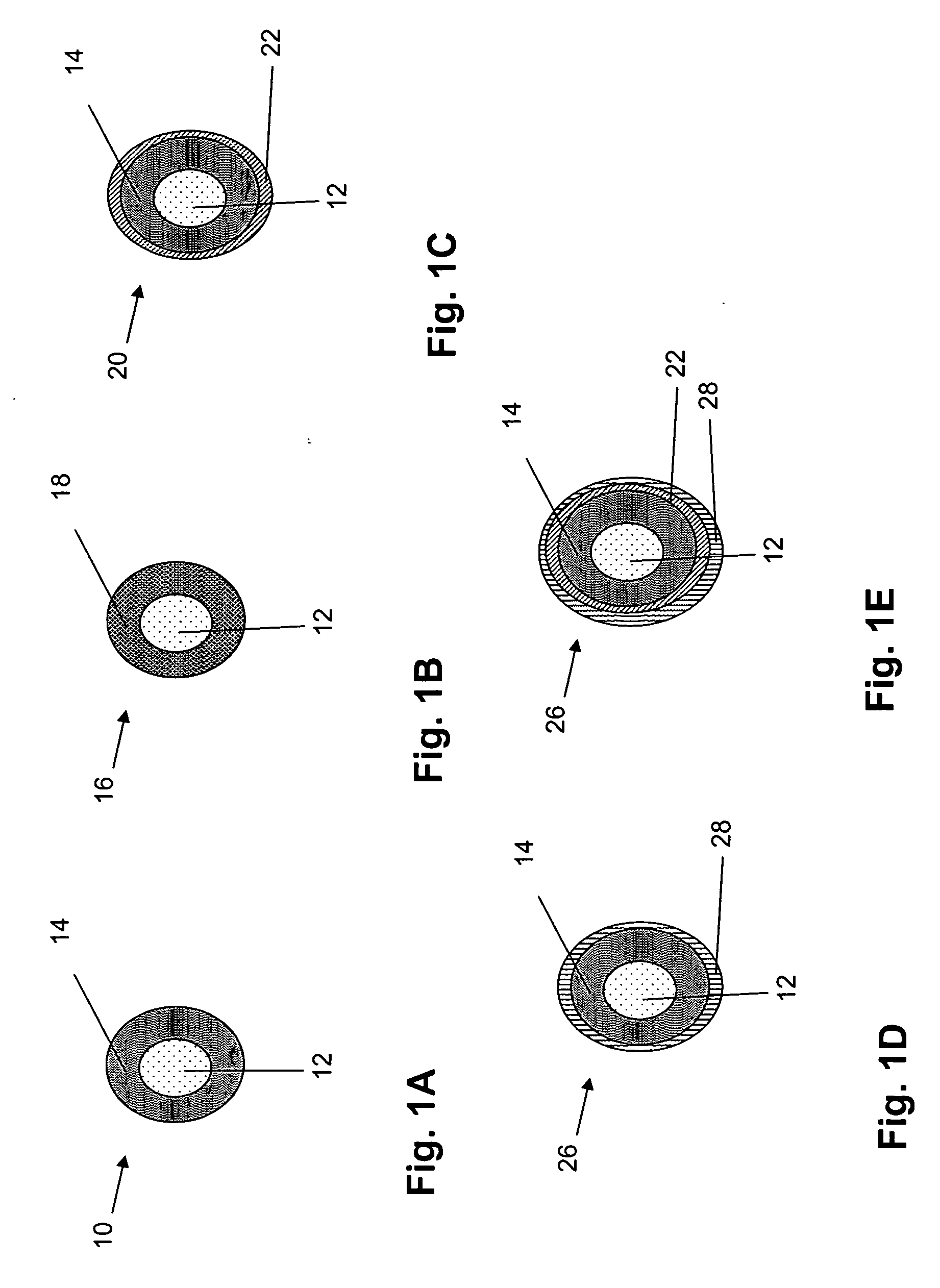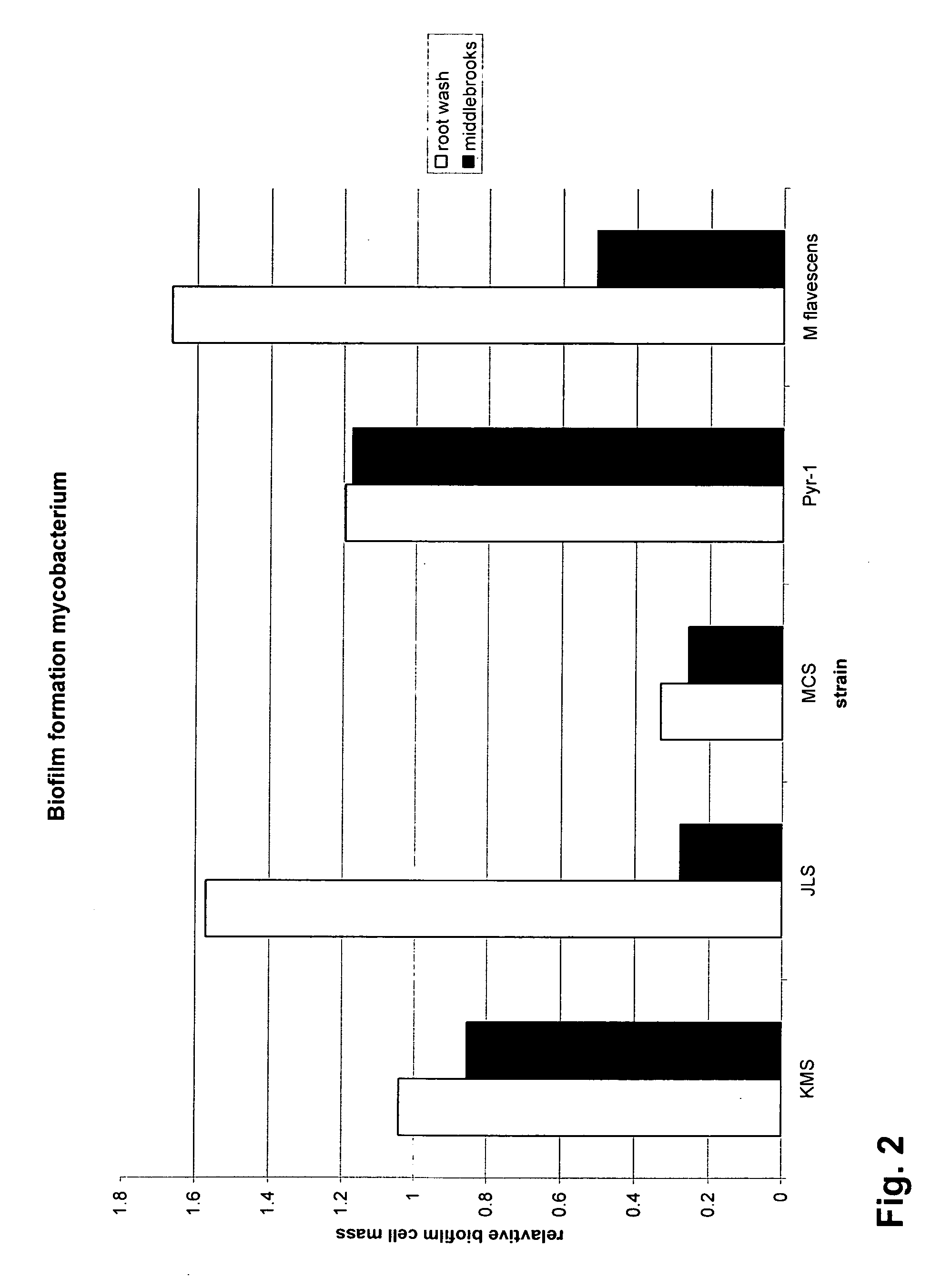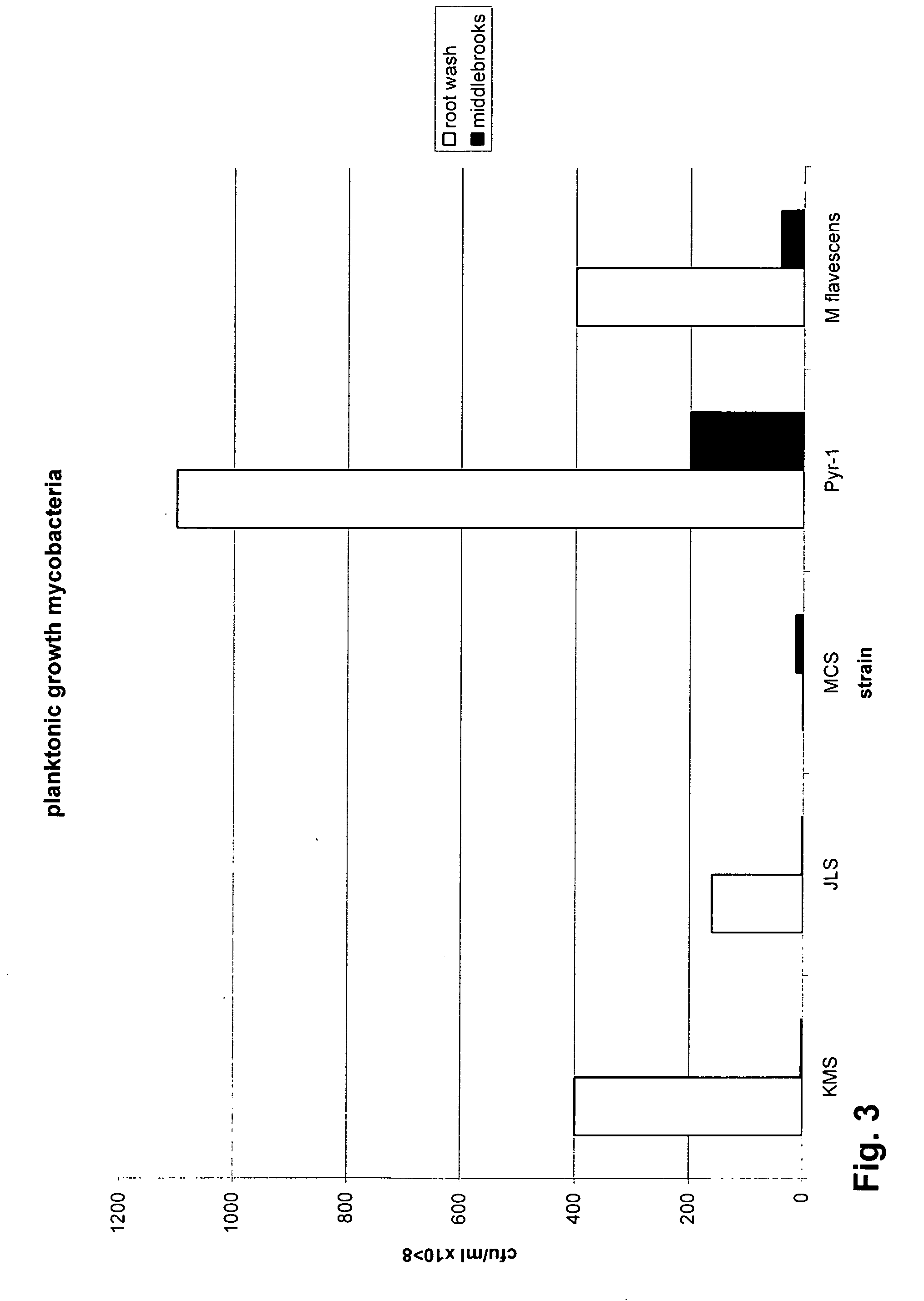Mycobacteria compositions and methods of use in bioremediation
a technology of compositions and mycobacteria, applied in the field of mycobacteria compositions and methods of use in bioremediation, can solve the problems of difficult removal or breakdown of various complex organic compounds, contaminated soil and environment near or downstream of industrial sites, and generating toxic chemicals, etc., to facilitate colonization of roots
- Summary
- Abstract
- Description
- Claims
- Application Information
AI Technical Summary
Benefits of technology
Problems solved by technology
Method used
Image
Examples
examples of embodiments
OF THE INVENTION
[0098] The following examples illustrate embodiments of the present invention that can be employed in order to facilitate soil decontamination by phytobioremediation. Additionally, experiments for identifying the presence of a contaminant-degrading mycobacteria are described in the incorporated references.
example 1
[0099] An example of soil identified to include PAH-degraders includes the PAH-contaminated soil from the land treatment unit (“LTU”) at the Champion International Superfund Site in Libby, Montana. The soil was characterized as a loam (48% sand, 39% silt and 13% clay). The soil had a pH of 6.6, an EC of 4.5 mhos / cm, and 1.88% organic carbon. The soil was passed through a 1.7 mm sieve and homogenized by hand and was stored in the dark at 4° C. until it was used. The soil had a moisture content of 10.2%. As such, it contemplated that various other types of soil can also include PAH-degraders.
[0100] The LTU soil was processed in order to assess the presence of PAH-degraders. Briefly, colonies capable of degrading pyrene were obtained from the LTU soil by suspending samples (0.1 g / ml) in sterile distilled water followed by serial dilution and spreading onto a basal salts medium (“BAM”) containing mineral nutrients but no carbon source. The basal salts medium contained (in 1 liter): 2....
example 2
[0102] Experiments were conducted to determine substances that can be used in media to support growth and propagation of contaminant-degrading mycobacteria. As such, strains of M. KMS, JLS and MCS from the Libby sites and strains M. flavescens (“flav”) and M. vanbalenni (“PYR-1”) along with a standard M. smeginatis (“smeg”) were grown on media composed of various substances. Table 1 shows the substrates used by M. KMS, JLS and MCS from the Libby sites.
TABLE 1KMSMCSJLSCommon SubstratesTween 40xxxTween 80xxxD-FructosexxxD-MannosexxxD-TrehalosexxxPyruvic Acid Methyl EsterxxxDifferential SubstratesD-MannitolxD-PsicosexPropionic acidxD-SorbitolxSucrosexα-CyclodextrinxSedoheptulosanx
[0103] Table 1 shows that the tweens, mannose, fructose, trehalose, and pyruvic acid methyl ester were commonly used by the M. KMS, JLS and MCS strains and could be formulated to boost mycobacterium inocula over other bacteria. As such, these compounds can be used as carbon sources for growing and propagatin...
PUM
| Property | Measurement | Unit |
|---|---|---|
| pH | aaaaa | aaaaa |
| depth | aaaaa | aaaaa |
| temperature | aaaaa | aaaaa |
Abstract
Description
Claims
Application Information
 Login to View More
Login to View More - R&D
- Intellectual Property
- Life Sciences
- Materials
- Tech Scout
- Unparalleled Data Quality
- Higher Quality Content
- 60% Fewer Hallucinations
Browse by: Latest US Patents, China's latest patents, Technical Efficacy Thesaurus, Application Domain, Technology Topic, Popular Technical Reports.
© 2025 PatSnap. All rights reserved.Legal|Privacy policy|Modern Slavery Act Transparency Statement|Sitemap|About US| Contact US: help@patsnap.com



